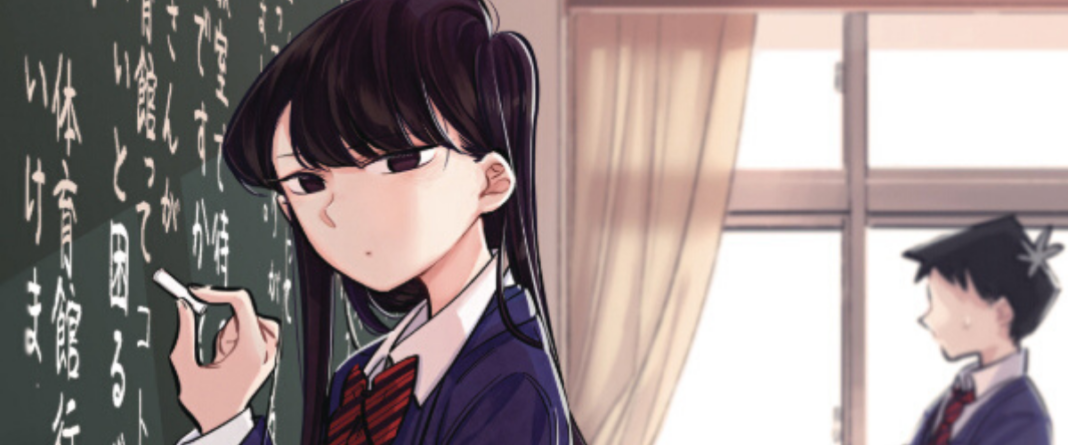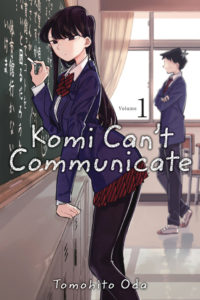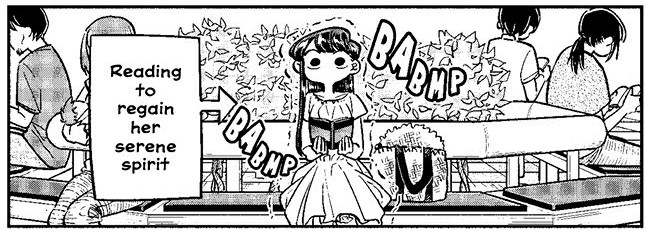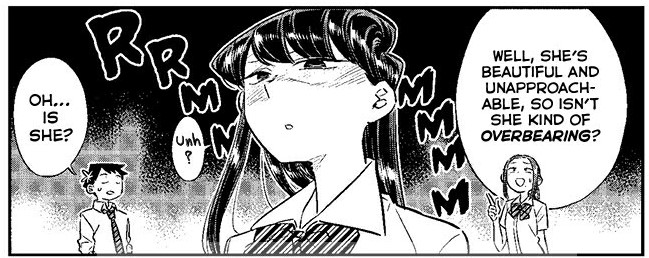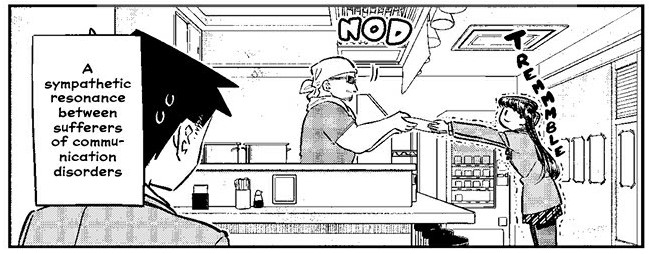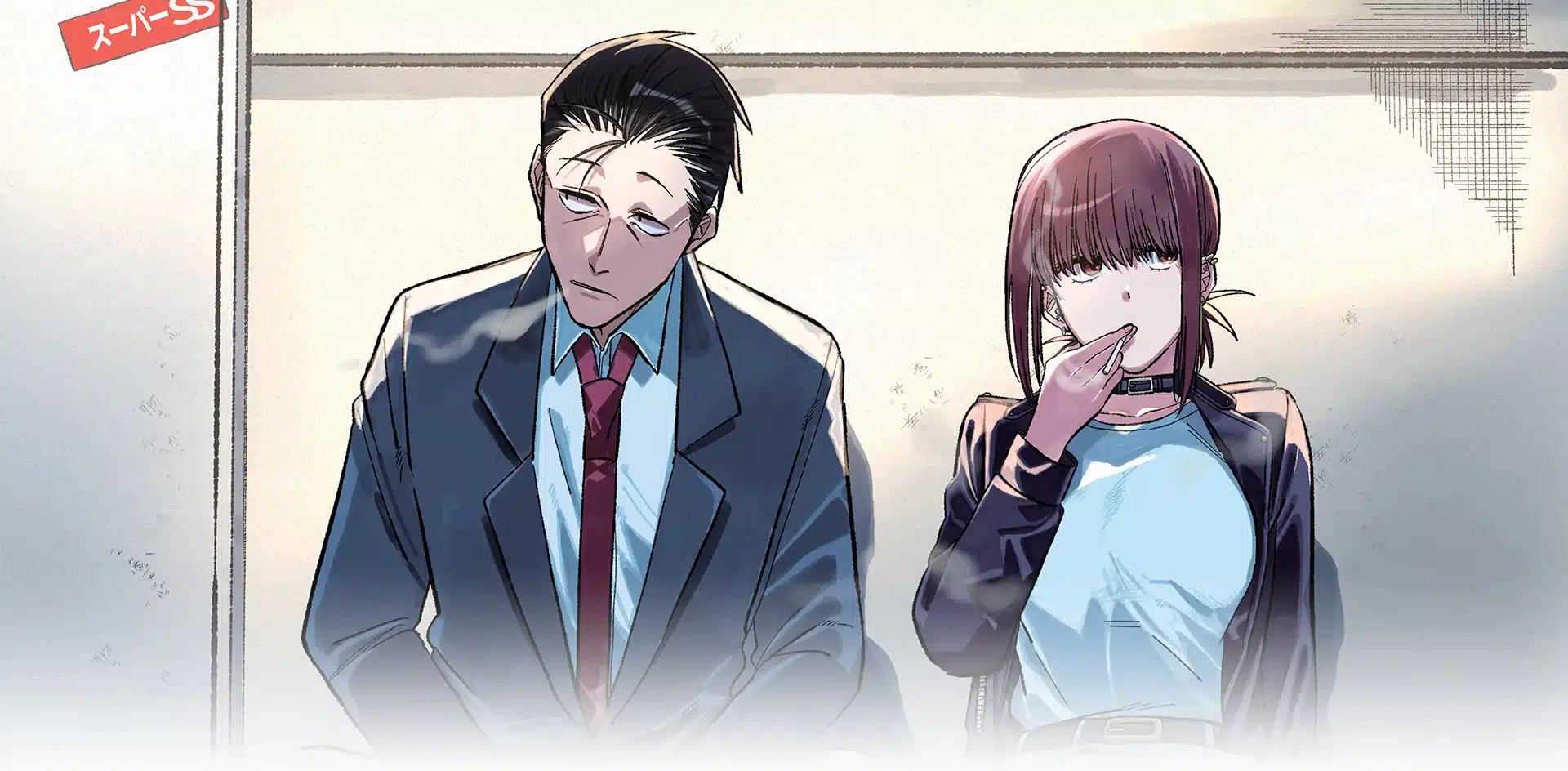Story & Art: Tomohito Oda
Translation & Adaptation: John Werry
Touch-up Art & Lettering: Eve Grandt
Design: Julian Robinson
Editor: Pancha Diaz
Publisher: VIZ Media
We live in an extremely socially awkward era, where most people prefer to communicate through text messages than talking on the phone, sometimes even preferring it to face-to-face interactions. The more connected the world has become, the easier it is to have the satisfaction of being social without having to leave our own little bubble.
But some people don’t necessarily choose to be anti-social; rather, they have a deep-seated fear of speaking with others. Such is the case for Shoko Komi, a high school student who is considered a “cool beauty” because of her elegant looks and tendency to eschew conversation. But the truth of the matter is that she desperately wants friends, she doesn’t want to be treated any differently from her peers. She has a supposed communication disorder that is holding her back, and the first person to realize it is her classmate, Hitohito Tadano. Komi confesses to Tadano, by means of writing in a notebook, that her goal for high school is to make 100 friends. Despite her setback and the seeming impossibility of the venture, Tadano agrees to help her navigate social situations, introducing her to an ever-expanding group of classmates.
The premise is pretty wholesome, and if you can overlook the occasional mild fanservice (one character has large breasts and a penchant for being talked down to, for instance), it essentially is quite pure. It is also a comedy, however, rife with slapstick, misunderstandings, and characters with dubious morals. But remarkably, even though Tadano is the textbook “nice guy” character from every harem series, and he finds himself completely surrounded by his mostly female classmates, the series has thus far avoided leaning all the way into the tropes of the harem genre. (It should be noted that one character, Najimi, presents as a girl but their gender is unknown and unfortunately treated as a bit of a joke. Najimi is a genuinely fun character, and it is a shame that the series occasionally goes for this low-blow punchline in regards to their gender fluidity. This seems to be more out of ignorance than intentional transphobia, but it is distasteful nonetheless.) Though it is clear that Tadano and Komi are growing romantic feelings for each other, he remains a loyal friend to her, not expecting her to reciprocate or acknowledge him in any way. Tadano is genuinely likable, and if his friendship with Komi continues to blossom into something more intimate, it won’t feel rushed, shoe-horned, or disappointing; it will be the natural outcome of two people spending time together and growing close.
Komi Can’t Communicate is not world-changing manga. It is cute and fun, something that injects a little positivity into a world that frequently seems to shun collaborative efforts to help others. Throughout the series, Komi is growing and changing, learning that she can lean a little on her friends as they help her to achieve her goals. The series puts an emphasis on building relationships based in kindness and consideration for those who are different, though it certainly has its flaws in that regard. But don’t assume that it is full of moralizing. On the contrary, creator Tomohito Oda doesn’t overdo the sweet moments of connection between characters, instead sprinkling them in so that they have maximum effect amidst the often patently absurd situations in which Komi’s group of friends find themselves.
For those interested in tagging along for Komi’s journey to expressing herself, the first four volumes of Komi Can’t Communicateare available through VIZ Media, with the fifth slated for a February 2020 release.


